Xuemeng Hu
CRT-Net: A Generalized and Scalable Framework for the Computer-Aided Diagnosis of Electrocardiogram Signals
May 28, 2021
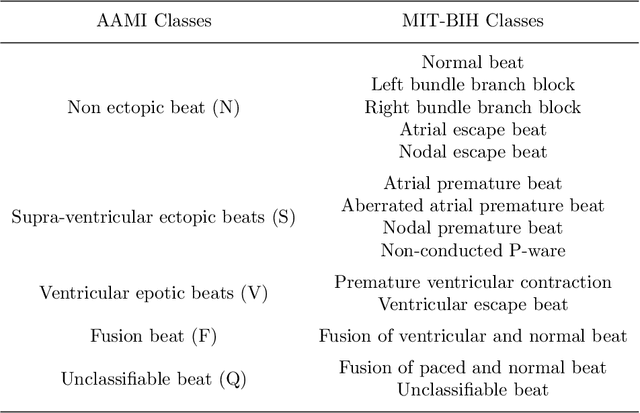

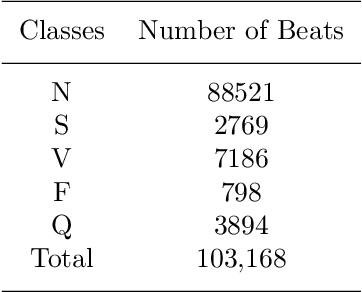
Abstract:Electrocardiogram (ECG) signals play critical roles in the clinical screening and diagnosis of many types of cardiovascular diseases. Despite deep neural networks that have been greatly facilitated computer-aided diagnosis (CAD) in many clinical tasks, the variability and complexity of ECG in the clinic still pose significant challenges in both diagnostic performance and clinical applications. In this paper, we develop a robust and scalable framework for the clinical recognition of ECG. Considering the fact that hospitals generally record ECG signals in the form of graphic waves of 2-D images, we first extract the graphic waves of 12-lead images into numerical 1-D ECG signals by a proposed bi-directional connectivity method. Subsequently, a novel deep neural network, namely CRT-Net, is designed for the fine-grained and comprehensive representation and recognition of 1-D ECG signals. The CRT-Net can well explore waveform features, morphological characteristics and time domain features of ECG by embedding convolution neural network(CNN), recurrent neural network(RNN), and transformer module in a scalable deep model, which is especially suitable in clinical scenarios with different lengths of ECG signals captured from different devices. The proposed framework is first evaluated on two widely investigated public repositories, demonstrating the superior performance of ECG recognition in comparison with state-of-the-art. Moreover, we validate the effectiveness of our proposed bi-directional connectivity and CRT-Net on clinical ECG images collected from the local hospital, including 258 patients with chronic kidney disease (CKD), 351 patients with Type-2 Diabetes (T2DM), and around 300 patients in the control group. In the experiments, our methods can achieve excellent performance in the recognition of these two types of disease.
Neural Topic Modeling by Incorporating Document Relationship Graph
Sep 29, 2020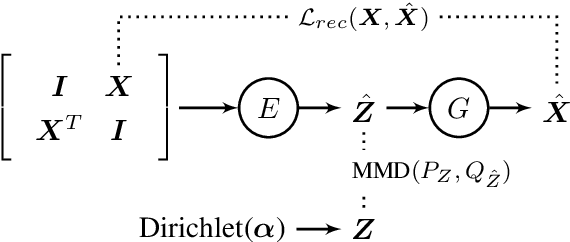


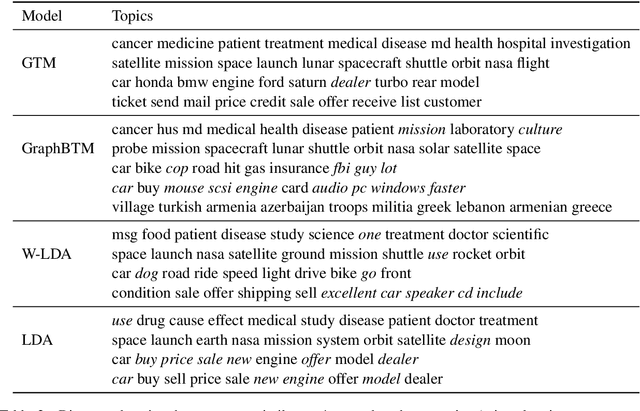
Abstract:Graph Neural Networks (GNNs) that capture the relationships between graph nodes via message passing have been a hot research direction in the natural language processing community. In this paper, we propose Graph Topic Model (GTM), a GNN based neural topic model that represents a corpus as a document relationship graph. Documents and words in the corpus become nodes in the graph and are connected based on document-word co-occurrences. By introducing the graph structure, the relationships between documents are established through their shared words and thus the topical representation of a document is enriched by aggregating information from its neighboring nodes using graph convolution. Extensive experiments on three datasets were conducted and the results demonstrate the effectiveness of the proposed approach.
Neural Topic Modeling with Cycle-Consistent Adversarial Training
Sep 29, 2020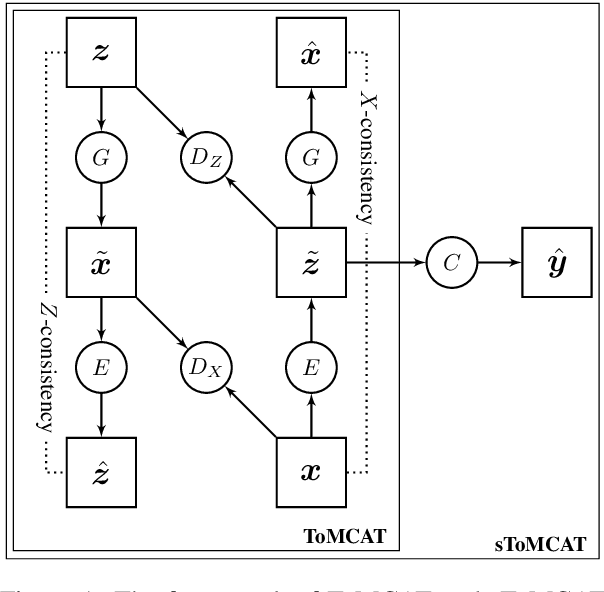
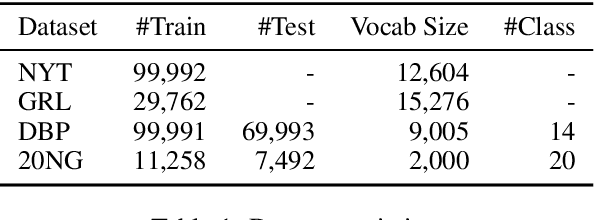
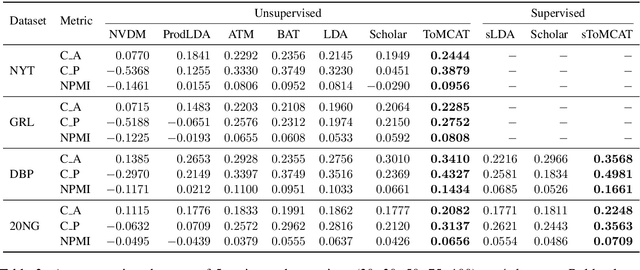
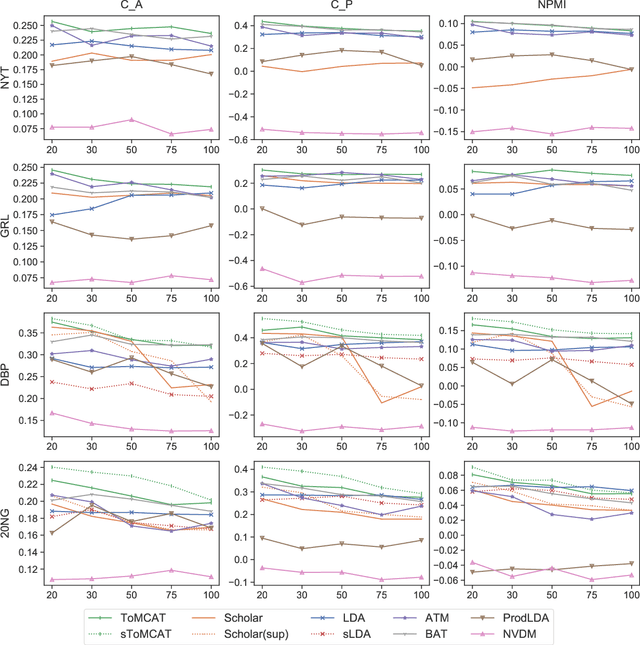
Abstract:Advances on deep generative models have attracted significant research interest in neural topic modeling. The recently proposed Adversarial-neural Topic Model models topics with an adversarially trained generator network and employs Dirichlet prior to capture the semantic patterns in latent topics. It is effective in discovering coherent topics but unable to infer topic distributions for given documents or utilize available document labels. To overcome such limitations, we propose Topic Modeling with Cycle-consistent Adversarial Training (ToMCAT) and its supervised version sToMCAT. ToMCAT employs a generator network to interpret topics and an encoder network to infer document topics. Adversarial training and cycle-consistent constraints are used to encourage the generator and the encoder to produce realistic samples that coordinate with each other. sToMCAT extends ToMCAT by incorporating document labels into the topic modeling process to help discover more coherent topics. The effectiveness of the proposed models is evaluated on unsupervised/supervised topic modeling and text classification. The experimental results show that our models can produce both coherent and informative topics, outperforming a number of competitive baselines.
Neural Topic Modeling with Bidirectional Adversarial Training
Apr 26, 2020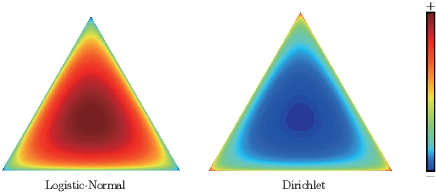


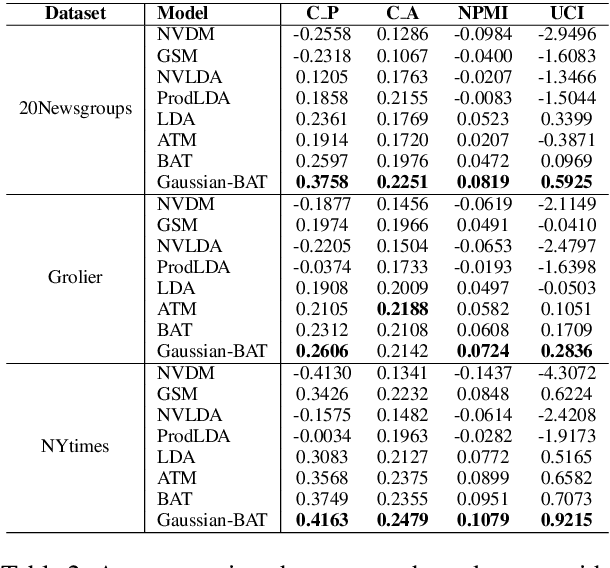
Abstract:Recent years have witnessed a surge of interests of using neural topic models for automatic topic extraction from text, since they avoid the complicated mathematical derivations for model inference as in traditional topic models such as Latent Dirichlet Allocation (LDA). However, these models either typically assume improper prior (e.g. Gaussian or Logistic Normal) over latent topic space or could not infer topic distribution for a given document. To address these limitations, we propose a neural topic modeling approach, called Bidirectional Adversarial Topic (BAT) model, which represents the first attempt of applying bidirectional adversarial training for neural topic modeling. The proposed BAT builds a two-way projection between the document-topic distribution and the document-word distribution. It uses a generator to capture the semantic patterns from texts and an encoder for topic inference. Furthermore, to incorporate word relatedness information, the Bidirectional Adversarial Topic model with Gaussian (Gaussian-BAT) is extended from BAT. To verify the effectiveness of BAT and Gaussian-BAT, three benchmark corpora are used in our experiments. The experimental results show that BAT and Gaussian-BAT obtain more coherent topics, outperforming several competitive baselines. Moreover, when performing text clustering based on the extracted topics, our models outperform all the baselines, with more significant improvements achieved by Gaussian-BAT where an increase of near 6\% is observed in accuracy.
 Add to Chrome
Add to Chrome Add to Firefox
Add to Firefox Add to Edge
Add to Edge